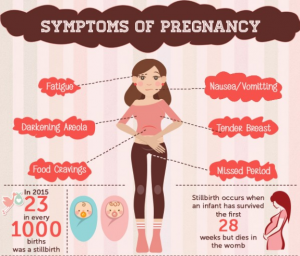Quadruple Marker Tests in Pregnancy

The quadruple marker test is a pregnancy screening test used to check for potential chromosomal abnormalities or birth defects in the developing foetus. It’s a blood pregnancy test measuring four specific biomarkers to identify potential risk factors. For expectant mothers, knowing what this test looks for, who should take it, and understanding its results is essential for a healthy pregnancy.
What is a quadruple marker test?
Before discussing the quadruple marker test, it is important to first understand the double marker test.
The double marker test is a prenatal screening test performed during the 10th and 13th weeks of pregnancy. It’s often accompanied by a Nuchal Translucency (NT) scan. The NT scan evaluates the thickness of the baby’s neck tissue to assess the risk of Down syndrome and other chromosomal abnormalities. The NT scan provides valuable information but is not definitive.
While a double marker test is done during the second trimester of pregnancy, the quadruple marker test is done in the third trimester. It’s a blood test for pregnancy and is conducted around the 14th to 20th week of pregnancy. For this test, a blood sample is taken from the arm of the expectant mother and sent to the lab, where four important biochemical markers are evaluated.
The quadruple marker test is also known as the quadruple screening test, quad screen, AFP plus, AFP maternal, maternal serum screen, MSAFP, and 4-marker screen.
What does a quadruple marker test measure?
The quadruple marker test is designed to screen for potential foetal anomalies and chromosomal abnormalities. Here is a brief overview of what a pregnancy test measures:
- Alpha-fetoprotein (AFP): A protein produced by a baby’s yolk sac and liver during pregnancy. Abnormal AFP levels can indicate neural tube defects (such as spina bifida) or chromosomal abnormalities.
- Human Chorionic Gonadotropin (hCG): The quad marker test includes an hCG test. Elevated or lowered levels of hCG can be associated with conditions like Down syndrome or other chromosomal abnormalities.
- Unconjugated Oestriol (uE3): Oestriol is a hormone produced by the baby and the placenta. Abnormal levels of oestriol can signal problems with the developing foetus.
- Inhibin-A: This hormone is produced by the placenta, and abnormal levels can indicate an increased risk of Down syndrome.
It’s a pregnancy test that poses no risk of miscarriage or other pregnancy complications. For computing the final results, it also factors in age, ethnic background, weight, and the fetus’ gestational age.
Why is a quadruple marker test done?
The quadruple marker test measures the levels of AFP, hCG, uE3, and inhibin-A in the mother’s blood. These biochemicals help assess the risk of major genetic conditions and birth defects. These include-
- Down’s syndrome (Trisomy 21) – It is a chromosomal disorder characterised by an extra copy of chromosome 21. It can lead to developmental delays, intellectual disabilities, and health issues in those affected.
- Edward’s syndrome (Trisomy 18) – It is another chromosomal disorder caused by an extra copy of chromosome 18. This condition often results in slow development and abnormalities in the body. Unfortunately, there is no cure for Edward’s syndrome, and it’s typically fatal before birth or within the first year of life.
- Abdominal wall defects – Abdominal wall defects refer to birth defects in which the foetus’ intestines or other abdominal organs protrude through the belly button. These defects require medical attention and often require surgery after birth.
- Spina bifida – It’s a neural tube defect that occurs when the foetus’s spinal cord fails to develop or close properly in the womb. This condition can result in various complications, such as paralysis of the lower extremities and learning difficulties.
Who should have the quadruple marker test?
The quad screen is a pregnancy test that every pregnant woman should undergo during the second trimester of pregnancy. However, in certain cases, the quadruple screening test in pregnancy becomes absolutely necessary, such as:
- If the expectant mother has a family history of birth defects.
- If the woman is 35 years or older at the time of birth.
- If the pregnant woman has used potentially harmful medications or drugs during pregnancy.
- If she has diabetes and uses insulin.
- If she had a viral infection during pregnancy.
- If she has been exposed to high levels of radiation.
How to interpret the pregnancy test results?
- If the test comes back negative
If the quadruple marker test returns normal or negative, the risk of chromosomal abnormalities is low. In such a case, the healthcare provider won’t recommend further testing.
However, remember that this is a screening test, not a diagnostic one. Even if the results are normal, it does not guarantee that the baby won’t have a single-gene disorder, chromosomal abnormality, or certain birth defects.
- If the test comes back positive
An abnormal or positive quadruple marker test result indicates an increased risk of chromosomal abnormalities or other foetal conditions. However, a high-risk result does not confirm the baby has a problem but suggests further evaluation.
So, the healthcare provider may recommend more definitive tests such as amniocentesis or chorionic villus sampling (CVS) to diagnose any potential issues accurately. These tests involve sampling amniotic fluid or placental tissue and can provide more conclusive information.
The quadruple marker test is a valuable tool in prenatal care that helps assess the risk of chromosomal abnormalities and foetal anomalies. It provides crucial information to guide decisions regarding further diagnostic testing and interventions.
If a woman is expecting a child, she must take a blood test for pregnancy in consultation with her doctor to ensure her and her baby’s well-being.















